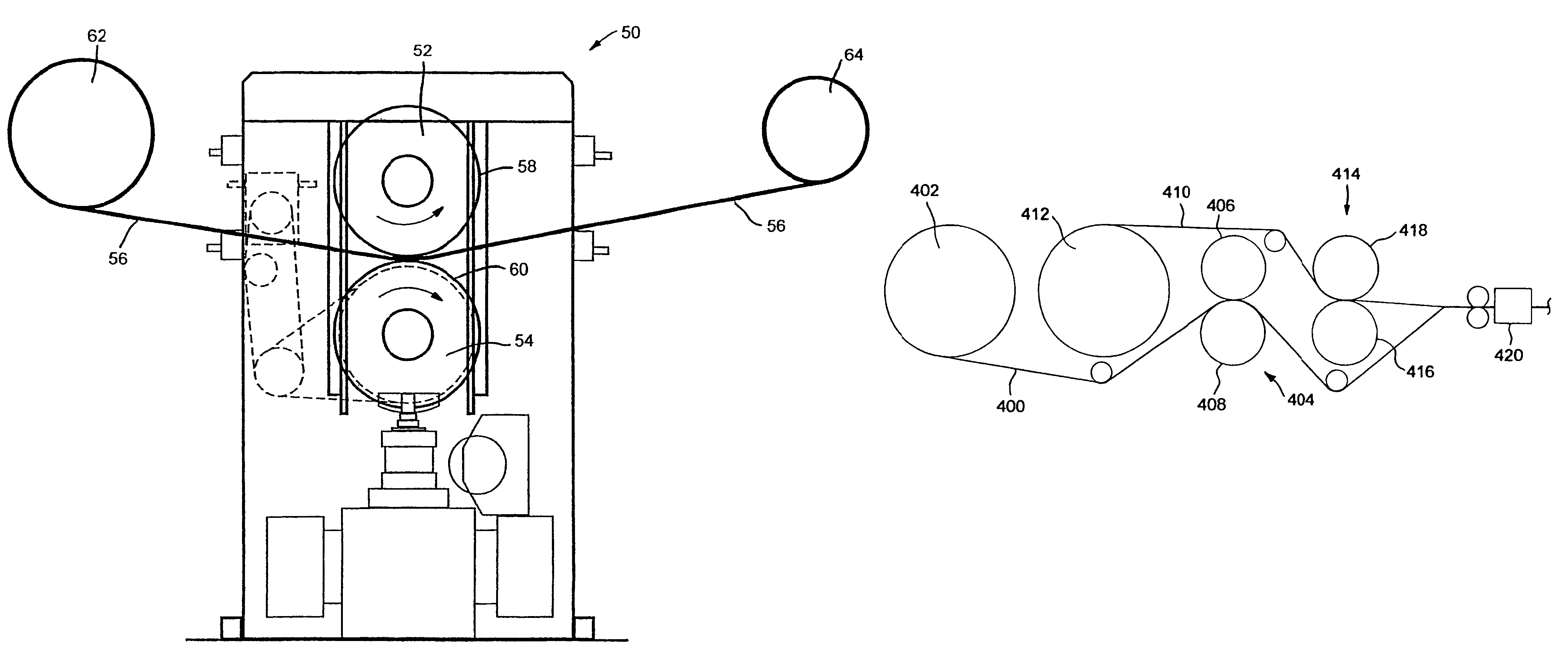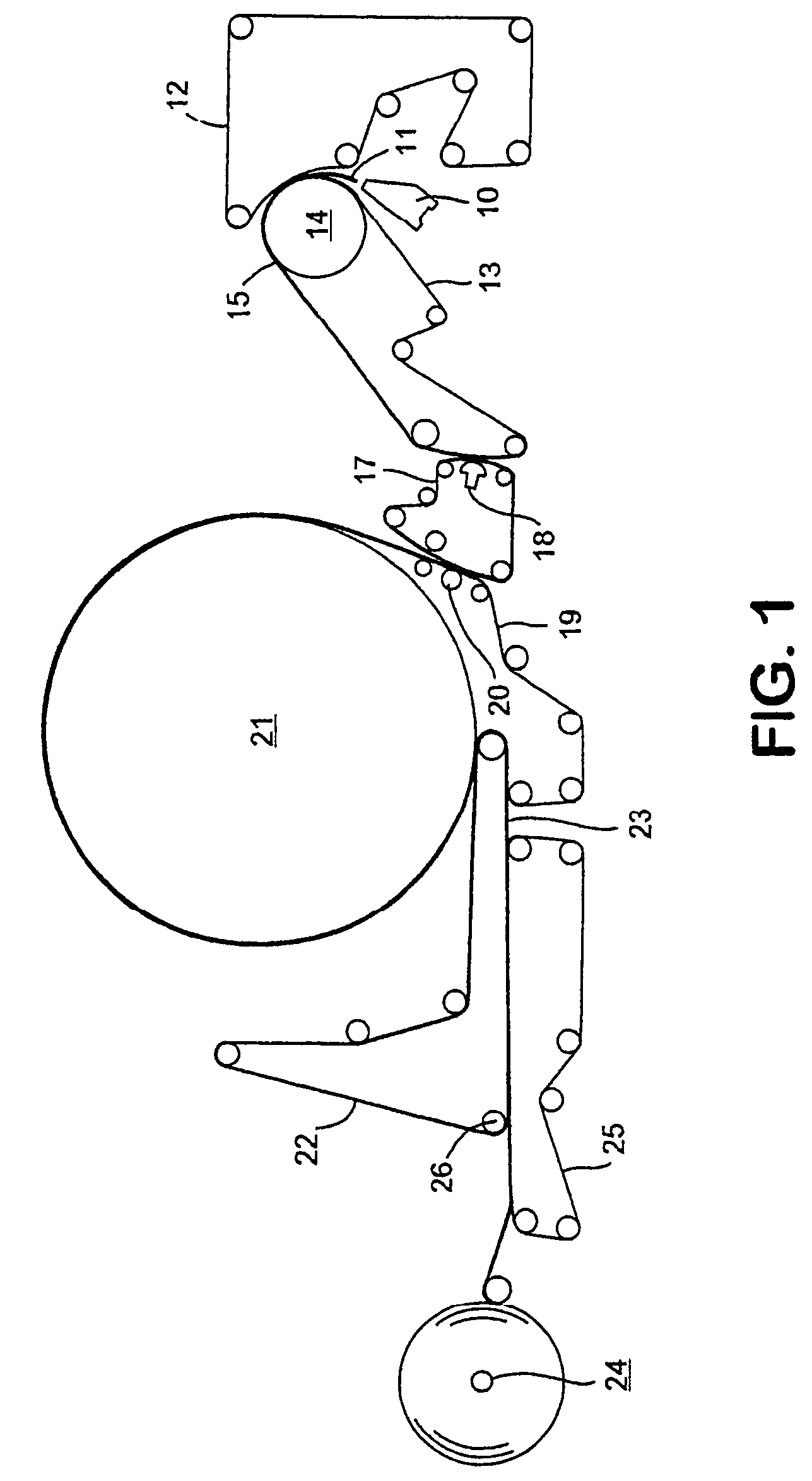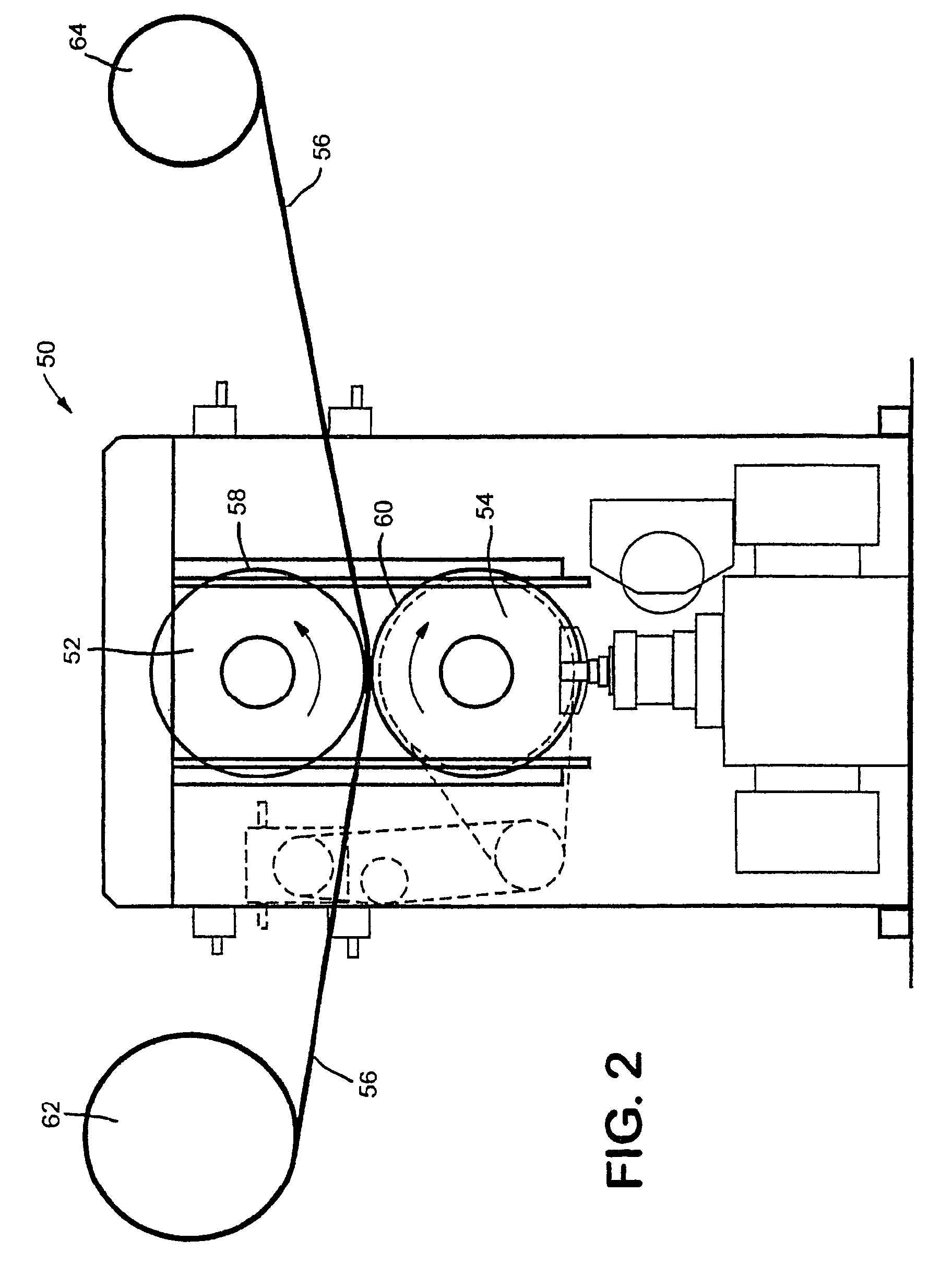Shear-calendering processes for making rolled tissue products having high bulk, softness and firmness
a technology of rolled tissue and calendering process, which is applied in the field of tissue product manufacturing, can solve the problems of base sheet bulk loss and other problems, and achieve the effect of good sheet softness and strength characteristics
- Summary
- Abstract
- Description
- Claims
- Application Information
AI Technical Summary
Benefits of technology
Problems solved by technology
Method used
Image
Examples
example 1
[0139]An uncreped through-dried bath tissue was produced by the methods described in U.S. Pat. No. 5,932,068, using a t1203-8 through-drying fabric and a t-807-1 transfer fabric, both supplied by Voith Fabrics Inc. The base web was made of 34% Northern Softwood Kraft (NSWK) and 66% Kraft eucalyptus, which was layered as follows: 33% eucalyptus / 34% NSWK / 33% eucalyptus by weight.
[0140]The eucalyptus was treated with 4.1 kg / mt active debonder and the NSWK was refined between 0 and 2.5 HPD / T with 2-3 kg / mt of PAREZ wet strength resin added. Three samples of varying tensile strength were produced by varying the refining and PAREZ wet strength addition.
[0141]The tissue was vacuum dewatered to approximately 26-28% consistency prior to entering two through-dryers and then dried in the through-dryers to approximately 1% final moisture prior to winding of the parent rolls.
[0142]A portion of the tissue was then converted using standard techniques, specifically using a single conventional polyu...
example 2
[0147]The base tissue from Example 1 above was also converted using roll-belt shearing to produce a bathroom tissue roll. This was achieved with a 2054 fabric (supplied by Voith Fabrics, Inc.), a 15% speed differential between the roll and the fabric with the roll traveling faster than the fabric, and a 65 Huyck fabric tension. In the process, the fabric side of the sheet contacted the fabric, and the air side of the sheet contacted the roll.
[0148]The product was again converted to meet a finished roll product specification of a 116 mm diameter, a target roll weight of 76 g, a sheet count of 210 sheets, a Kershaw firmness of 7.5 mm and a sheet length of 104 mm. As the required roll weight was 75.8 grams, the resulting roll bulk was 12.2 cc / g.
[0149]In this case the finished sheet geometric mean tensile strength was 644 grams and the fuzz-on-edge value was 1.93 mm / mm roll on the fabric side of the sheet. This product is designated Example 2 in the table below, where it is again compar...
example 3
[0151]Finally, the products of this invention are compared to current commercial products in the table below. As is clear from the table, neither of the commercial 1-ply bath tissue products has the properties of the sample in the invention. The first control sample is also included to facilitate comparison with the conventional calendering technique.
[0152]
SampleKleenexCharmin ®Cottonelle ®Control 1RegularRegular(regularExample 1RollRollcalendering)Roll firmness,7.67.17.97.8mmBone Dry Roll76.3NMNM78.9Weight (grams)Sheet Bone dry35.832.630.536.7BW (g / m2)Roll Bulk1210.712.512.1(cc / g)Sheet757619656706Geometric MeanTensile Strength(Grams / 3 inches)Fuzz-on-Edge3.491.331.331.56(mm / mm)MD coefficient0.330.2930.2960.32of frictionCD coefficient of0.320.3140.2850.31frictionMD Slope A (kg)5.382.714.986.46CD Slope A (kg)9.816.014.368.52Kawabata0.0430.0250.0320.068bendingstiffnessStiffness / GM0.005920.006190.006870.00917slope ACompression0.4720.5980.520.524Linearity
PUM
| Property | Measurement | Unit |
|---|---|---|
| width | aaaaa | aaaaa |
| width | aaaaa | aaaaa |
| diameter | aaaaa | aaaaa |
Abstract
Description
Claims
Application Information
 Login to View More
Login to View More - R&D
- Intellectual Property
- Life Sciences
- Materials
- Tech Scout
- Unparalleled Data Quality
- Higher Quality Content
- 60% Fewer Hallucinations
Browse by: Latest US Patents, China's latest patents, Technical Efficacy Thesaurus, Application Domain, Technology Topic, Popular Technical Reports.
© 2025 PatSnap. All rights reserved.Legal|Privacy policy|Modern Slavery Act Transparency Statement|Sitemap|About US| Contact US: help@patsnap.com



